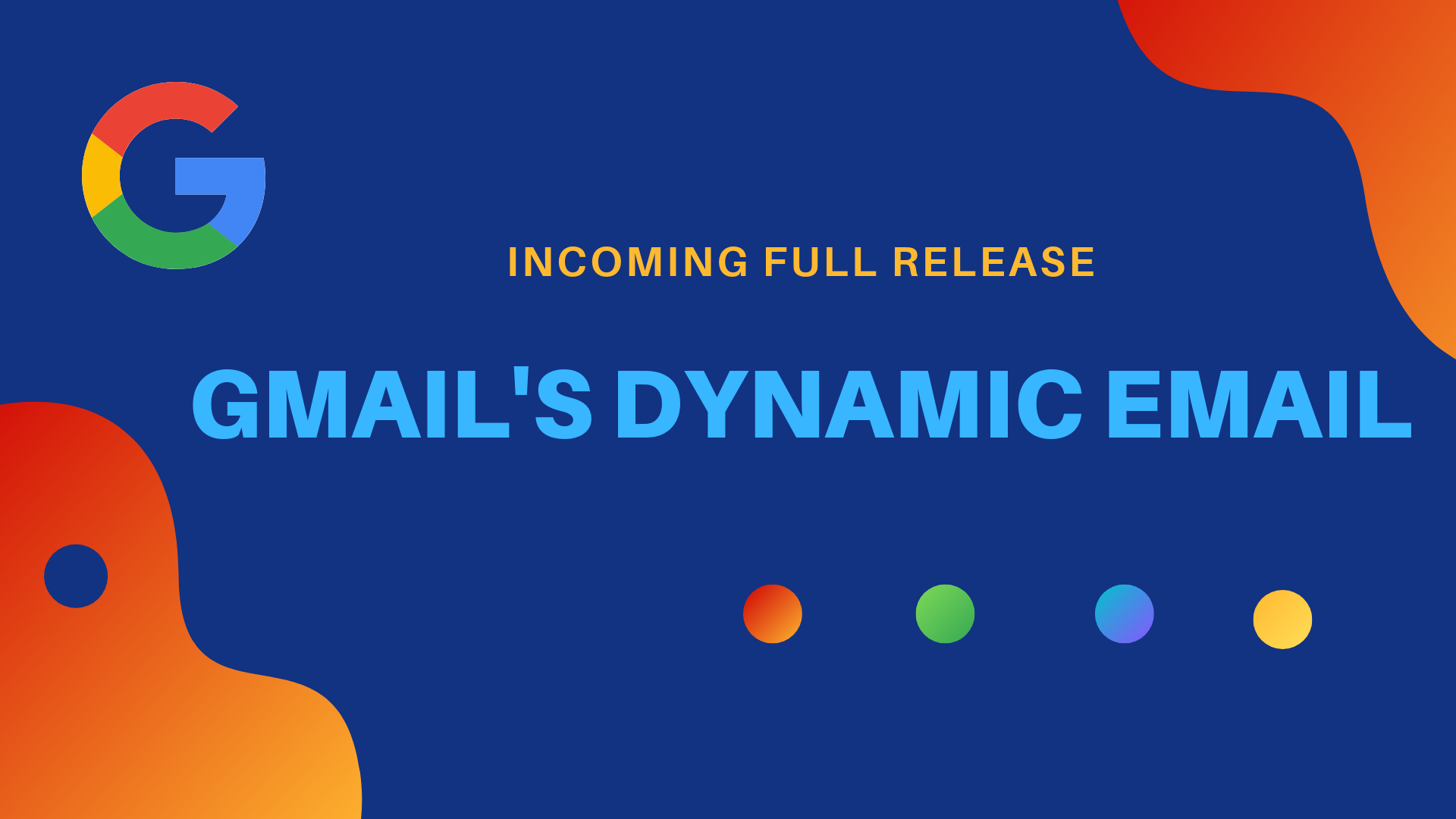Courtney-Dale Nel
Courtney is a Content Writer on the Pure SEO team. They have a Bachelor in Behavioural Psychology, way too much experience working with pigeons, and a fondness for nachos that rivals most marriages.


Google has been casting a judicious eye over all of its programs. Assistant, Ads and Analytics have all seen user-oriented updates aimed at striking the balance for both corporation and individual satisfaction. Now, there’s a new player in the mix: dynamic emails in Gmail.
Three months ago, in March of 2019, Google announced dynamic emails as a new beta feature for their Enterprise and G-Suite clients. Following the success of the tests, Google has announced that they are rolling out dynamic emails to the entirety of their userbase. Regardless of whether you’re an enterprise client or just an average Joe, you will see dynamic emails starting to crop up in your inbox on July 2.
So, what are dynamic emails, and what do they mean for the world of digital marketing?


Dynamic email is a newer, more useful way of using Gmail which allows users to interact with and take direct action on the email itself without having to go somewhere else to do it. Dynamic email increases in-mail capabilities, letting users reply, resolve, and action changes from within the emails, rather than being passed along to an external site.
Here’s a list of action examples from Google itself: RSVP-ing to an event, filling up questionnaires, browsing catalogues, responding to comments from Google Drive files, and much more.
“…email has largely stayed the same with static messages that eventually go out of date, or are merely a springboard to accomplish a more complex task.”
Aakash Sahney, Product Manager for Gmail
Google is looking to evolve email into more of an interactive thread, shying away from the traditional single letter format. Instead of dealing without out-of-date messages cluttering our inboxes, we’ll be seeing messages update themselves with the most recent reply or action taken.
Here’s an example. Doodle, an online calendar tool for time management and meeting coordination, has put dynamic mail to good use. It allows people to schedule a meeting by sending invites for multiple possible times and then letting the recipient choose a time window that works for them. Previously, you would have been navigated to Doodle’s website via a link from their email, but dynamic email now lets users choose their preferred meeting time from within their Gmail inbox. No external navigation, no second tab, nothing.
It’s important to note that this function is currently only available for web-based email browsing with mobile support coming soon.


Google has implemented AMP technology into their emails, which is how they can create what is essentially a mini webpage within an email browser. Primarily known for developing super-fast webpages for mobile clients, the AMP for Email format can also enable recipients to interact with the components from within the message. Additionally, Gmail will update the threads based on external actions taken outside of the email, so that your inbox is always up-to-date.
How does this work? Well, instead of loading JavaScript written by the developer of a given site, AMP loads any interactive features using custom elements designed to minimise load time and maximise user experience.
Basically, your email will load relevant tools and interactive pieces as quickly as possible, linking to the site it came from so that your actions are regularly updated.
Companies are verified by Google to prevent any privacy headaches that could arise, and they must also be prepared to format their emails with AMP components to achieve the dynamic format. Companies like Pinterest, Booking.com and Doodle have already joined the charge during the beta, with more to come now that a full release is on the horizon.
While this is a fantastic progression along Google’s path to a better UI across their applications, this new rollout also means a change for email marketing – especially when it comes to conversion rate optimisation.
Don’t get us wrong. It’s about time that emails become more than just their name – “electronic mail” – and move towards a more efficient, useful means of getting things done.
However, it’s inevitable that click-throughs will be minimised when companies employ dynamic mail. On the flip side, the same technology also gives your customer access to a sign-up form or “buy now” button right in your email, effectively taking out extra (and unnecessary) steps from your customer’s conversion journey.
Think about this: the number of times customers decide not to buy a product in the period a shipping page takes to load is fairly high, but using the AMP technology won’t expose them to this risk.
It’s possible that dynamic email will change how we look at CRO. Rather than only optimising for advertising, email optimisation is likely to expand as a field in the near future.
At the moment, there haven’t been many words from Google about how this mechanic is going to affect click-through rate optimisations, or if this will matter at all. After all, businesses want conversions, and customers want a faster, convenient journey to get what they want. It seems like a win-win. At the end of the day, it’s all about what kind of campaign you want to market with.
Looking for more industry updates? Subscribe to our Pure SEO newsletter for all of the latest Google Ads and SEO news broken down into plain language, and explained with industry expertise.





